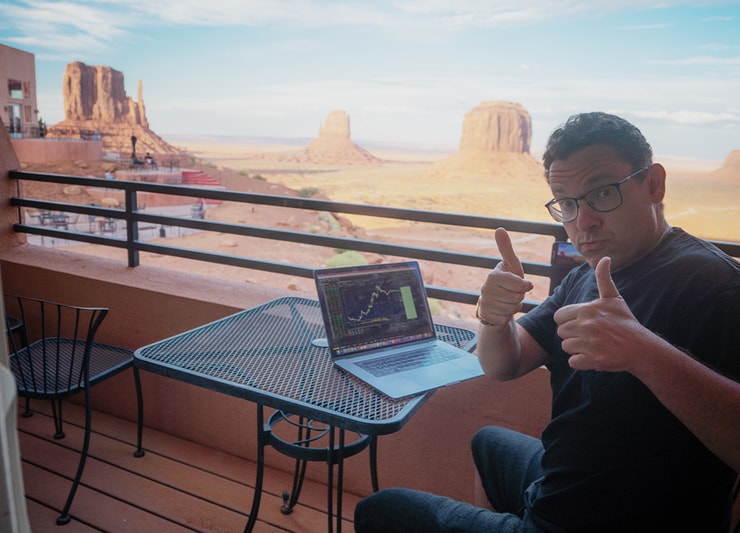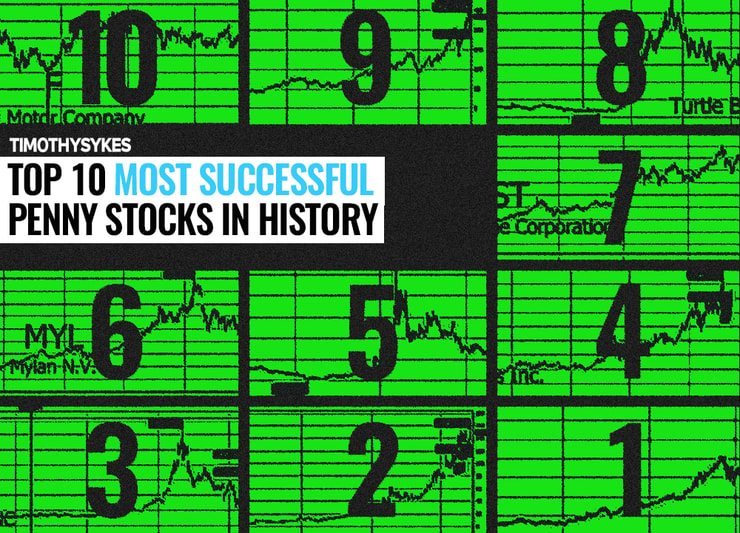Several of my students have been crushing it lately…
Gooooood morning!☀️
I don’t even remember the last time I was in a halt 🤣 this might be the quickest trade I’ve taken all year lol$LIFW +31% pic.twitter.com/AUEQGp5qzO— Gayane (@xogayane) November 8, 2023
Solid +33% on $TNON over the day. Not the best executions but as @timothysykes said, stay extra careful on shorting these days! @profitly #trading #Traders pic.twitter.com/GchrJs5QJd
— Iman (@iman_trades) November 8, 2023
Bought $LIFW at 8.055 and sold at 9.64. My best trade to date! Thanks @timothysykes for teaching me that former runners can run again!
— Elias Quezada (@EliasSenpai94) November 8, 2023
What are they doing so differently from the majority of traders who lose?
They’re taking advantage of the hottest trend in penny stocks.
If you have no idea what I’m talking about…you’re in luck!
Because today I’m going to share with you what it is and how you too can potentially take advantage of it.
Table of Contents
The Best Trend In Penny Stocks
Yesterday I sent out this tweet:
PATTERN THAT'S WORKING WELL RIGHT NOW: Focus on buying any heavily shorted stocks that are breaking out near the market open, worked well with $PXMD the other day, $LIFW yesterday & now $TPST today…very simple, but very effective, giant thanks to the over-crowded short niche!
— Timothy Sykes (@timothysykes) November 9, 2023
It’s what I believe is the best way to trade penny stocks in this current market. And today I’m going to get into more detail explaining why I think that is.
Taking Advantage Of A Trend I Popularized

2025 Millionaire Media, LLCShorting stocks is nothing new…
If you ever read the book Reminiscences of a Stock Operator then you know they were shorting stocks in the early 1900s.
However, I’d like to think I’m someone who popularized shorting penny stocks in the early 2000s.
It was such a brilliant strategy…find the scummiest companies being promoted…aka pump and dumps…and wait for the right moment to short them.
It worked well…and it was largely responsible for my first million in trading profits.
For me, it was always easier to find crappy companies to short than good companies to buy.
But you know what?
It’s not something I do anymore.
Why?
Because shorting crappy stocks has gotten severely overcrowded. In other words, too many traders are doing it.
In fact, the risk vs. reward dynamics have shifted dramatically. It actually makes sense to buy these stocks than to short them.
I know…it’s wild…but that’s how markets work.
We have seen one epic short squeeze after another this year.
Just check out what happened in the ticker LIFW:

More Breaking News
- Delta Air Lines: Is a Rebound on the Horizon?
- Will GAUZ Reach New Heights?
- BTC Digital Celebrates Green Mining Milestone in Georgia
I was trading this thing in the $1s when I first realized it was a short squeeze…but it eventually went to $17+…crashed…and had another spike in the $11s.
Why Are We Seeing This?
#1: Short sellers are narrow minded. They mainly use logic. Which works great if you’re an investor. However, you need to consider risk management as a trader. If you shorted LIFW at $5 can you absorb a move to $17? Most traders can’t. You need to consider the price action and look at other factors.
Just because a stock is bleeding capital and they’re likely going to have to do an offering in the future…doesn’t mean the stock can’t rip $10 in your face.
#2: Short sellers can’t adapt. At the end of the day the short seller is right. The stock will eventually fail. But can they absorb the squeeze before the stock tanks? Traders like myself know this…and our buying pressure along with their stubbornness is what’s creating these squeezes.
What Stocks Should You Be Looking For?

2025 Millionaire Media, LLCThis will probably blow your mind. It’s actually the worst stocks.
Why?
That’s where all the shorts will be crowding.
When a play looks so bad…it lures in so many shorts.
The worst plays can be the biggest spikers.
What’s Really Working Well?
Look for these setups as the stocks are hitting the high of the day…these breakouts are causing massive short squeezes.

Also, avoid buying the dip after the stock has experienced a sell-off. Remember, these are terrible stocks that never deserved to be up in the first place.
In the future, I’ll have AI tools that help you spot opportunities like these. In fact, in a few days I will be giving a demo of an AI product that can be a total game changer. To register, click here.
Ready to Exploit the Market’s Wildest Moves? 🚀

2025 Millionaire Media, LLCThe penny stock landscape is shifting, and what used to be the “worst” plays are now becoming the best.
My students are living proof of the opportunities by going against the grain and leveraging the hottest current trends in penny stocks. 📈
🔥 While others are still playing by the old rules, we’re cashing in on the new ones.
🔥 Forget shorting the “scummiest” companies; now we’re learning why and when buying is smarter than selling.
🔥 The market is full of surprises, with stocks making unprecedented moves that defy traditional logic.
If you’re out of the loop, you’re missing out on potentially life-changing opportunities. But it’s not too late to get in on the action.
👉 Join my team for our next live training session where we’ll unveil the counterintuitive strategies that are making big waves in the penny stock world.
🚀 Learn why the stocks everyone loves to hate may be your ticket to trading success.
🚀 Understand the psychology driving massive short squeezes and how to profit from them.
🚀 Discover why the worst companies can offer the best breakout opportunities—and how to identify them.
We’ll show you exactly what to look for, how to time your trades, and why now is an incredible time to be a penny stock trader.
The best part? You’ll get to see these strategies in action and learn how to apply them yourself.
Are you ready to turn market chaos into your next big win? Want to stop following outdated advice and start capitalizing on the market’s most explosive trends?
Don’t watch from the sidelines. Get the knowledge to take on the market with confidence and join the ranks of traders who know how to make volatility work in their favor.
Your playbook for navigating the new penny stock trends is just a click away. Sign up for the live training now—spots are filling up fast!








Leave a reply